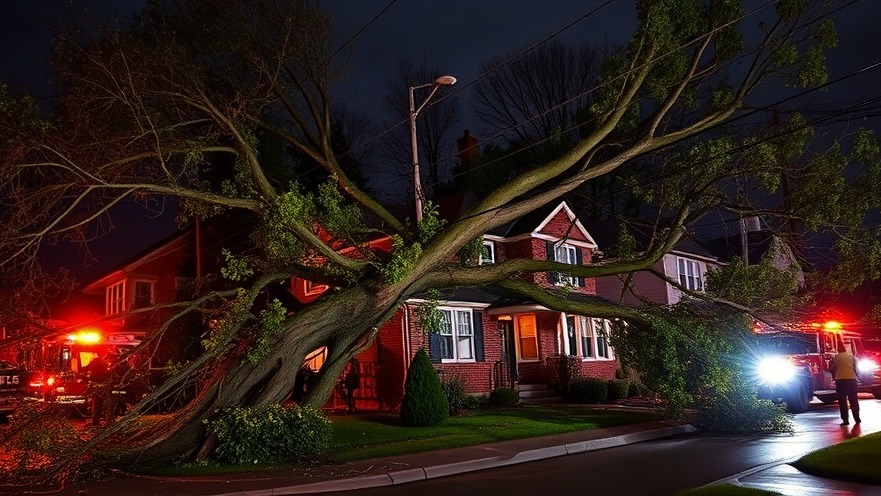
Understanding Storm Damage Response in Maryland
When severe storms strike, the aftereffects can be devastating, leaving homeowners facing the daunting task of recovery. From flooded basements to downed trees, the emotional toll can be overwhelming. However, understanding how to navigate the critical first 24 hours after storm damage can alleviate some of that stress and prevent further complications.
Safety First: Assessing Risks
Your safety—and that of your family—should always come first in the wake of a storm. Start by surveying your property for immediate hazards. Look for downed power lines and structural damages; if it seems unsafe, evacuate immediately and contact emergency services. Following that vital step, go through your home and document damage while ensuring that there are no residual threats to your safety, such as gas leaks or exposed wiring.
The Importance of Documentation
One of the most critical aspects of dealing with storm damage is thorough documentation. The first 24 hours are crucial for gathering evidence that your insurance company will later rely upon. Take photographs and videos of all visible damage—this could range from damaged roofs to waterlogged carpets. A comprehensive visual account ensures that you’re prepared when it comes time to file your insurance claim. Remember, even seemingly minor damages can play a significant role in the claim process, so document everything.
Contacting Your Insurance Provider Promptly
Reaching out to your insurance company is a priority after ensuring everyone's safety. It’s essential to inform them about the situation, but don’t provide too many details right away; they will request more information as you gather it. It’s advisable to wait until all damages have been documented before submitting your claim, as this will prevent potential underpayments or denials. Taking the time to ensure that everything is accurately recorded will make a significant difference in your outcome.
Making Temporary Repairs Safely
It might be tempting to rush into repairs to halt further damage, but patience is vital. Temporary fixes can be helpful, but it’s essential to resist making any permanent changes until an insurance adjuster has had the chance to assess your situation. If you have to make emergency repairs, keep a record of receipts for any materials or services. In many cases, your insurance will cover these costs if you can demonstrate their necessity.
Why Hire a Public Adjuster?
Navigating the complexities of insurance claims can be daunting for many homeowners. Public adjusters specialize in helping clients through this challenging process. Their expertise can streamline communication with the insurance company and ensure that your claim is handled efficiently. A public adjuster can not only arrange for thorough documentation but also negotiate the best possible outcome for your claim.
Community Perspectives: Learning from the Experience
Engaging with your community after experiencing storm damage can provide invaluable insights. Local forums and social media groups allow homeowners to share their tips and experiences. These insights can help you avoid common pitfalls and navigate the recovery process with greater ease. Maryland homeowners have unique challenges, as the regional weather can lead to specific types of damage, making community experiences even more pertinent.
Emotional Resilience: Coping with Storm Aftermath
It’s essential to acknowledge the emotional strain caused by storm damage. The stress of recovering can lead to feelings of isolation or anxiety. Surround yourself with supportive friends and family, and don’t hesitate to seek professional guidance if necessary. Remember, it's acceptable to ask for help during this period. A robust support network can provide both practical aid and emotional relief as you rebuild.
Moving Forward: Preparing for Future Storms
After handling the immediate aftermath of storm damage, it’s beneficial to consider how to better prepare for future storms. Simple steps—like however creating an emergency kit, installing storm windows, or having a reliable contractor on speed dial—can make recovery smoother next time. Proactive measures contribute greatly to reducing the risks posed by severe weather.
By implementing these strategies in the aftermath of storm damage, Maryland homeowners can protect their health, finances, and peace of mind. Being proactive local answers can offer deep community insight into the complexities involved in storm recovery. Remember, staying informed and prepared will always pay off in the long run.
 Add Row
Add Row 
 Add Element
Add Element 


Write A Comment